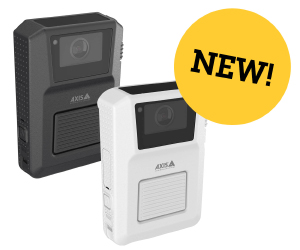Industry Focus
Is It Possible to Future-Proof the Potential for RFID?
Radio frequency identification (RFID) has not so much had a difficult birth, but also a troubled and tormented upbringing and has often been referred to by cynics as suffering from the “Kennedy Syndrome.”
This is to say that expectations about its potency as the “chosen one” were so high, that it was almost destined from that time not to deliver. It was heralded from day one as a renaissance technology—the so-called “silver bullet” by which all retailers will be able to gain the ever-elusive transparency of their total inventory and eliminate their shrink.
But such was the hype around RFID and its endlessly imagined “zeitgeist” that it was hard not to be seduced and swept along in the late 1990s. For example, it was widely claimed that RFID will end widespread diseases such as foot and mouth BSE in cattle because herds will be totally traceable to the farm and field where they graze, thus containing culls. The same was argued for the integrity of drugs, thus eliminating the risk of purchasing stolen or counterfeit drugs over the Internet. Neither claim has materialised or was smothered at birth so that rather like the Kennedy Dynasty, it never realised its true potential.
So what is it and why has its hype become such a jinx to retailers embarking upon lengthy and often inconclusive trials? To be fair to RFID, it can be said from the outset that most of the barriers to success have been external to the capability of the technology. That is to say that it can probably do most of the things attributed to it and deliver a wide range of benefits, but regulation or public opinion has not gone its way.
The external issues have centred on flawed thinking—that it is a silver bullet or a quick win. The reality is that retailers need to look at the cost implications in the round—it may save the business money in terms of ROI over a period of time, but it will not do this from year one, or even year five. This has proved too much of a gamble to CEOs and FDs looking to make immediate cost savings across the business.
Much of Europe has been gripped by recession since 2008 and RFID trials, although still taking place, have fallen by the wayside or been put into the too-difficult-to-prove tray for filing.
There have also been major issues in the press about its scope and “ultra vires” capabilities surrounding privacy, a little like the Edward Snowdon revelations gripping the U.S. and European media at present—that it is a so-called SMART-chip spy technology; but more about this later on in the article.
What Is It?
In essence RFID uses microchips to transmit serial numbers to a reading device wirelessly without the need for human intervention. This allows goods to be tracked electronically along a supply chain from the warehouse to the point of sale, or in the case of livestock from “farm to fork.” It is a supply-chain-wide extension of radio frequency (RF) technology used in electronic article surveillance (EAS) technology, which is why it is of interest to LP practitioners, but its potential to retailers is enormous. Transparency and the accuracy of the supply chain means that there is constant replenishment and availability so not only are retailers aware of shrink as and when it happens, but also visibility of inventory to make sure there are always the right goods on the right shelf at the right time and the right price to enable the sale to take place in the first instant. This means happy customer, happy retailer. It also allows for up-selling and customer service support through smart uses of RFID technology. RFID chipped clothing can inform customers through smart readers on their phones for example, of offers on an item they have in their hand or via smart “magic” mirrors.
Having a not-touched-by-human-hand technology in the supply chain has tremendous cost savings on staff not having to count or add security tags in store as the integrity of the system depends upon source tagging—applying the tag at the point of manufacture—to ensure the items can be tracked through the supply chain. Analysis of time taken to count and tag items in stores has revealed not only huge costs in time, but also accuracy and the impact upon customer service as staff are often taken away from front line shop floor tasks. Although more commonplace now, source tagging in itself has had a difficult journey to market because of the displacement of the cost to the supplier, which has further muddied the waters in terms of heralding the coming of RFID and resulted in lengthy negotiations on cost sharing and optimisation of packaging to achieve the best “read” through the supply chain.
Early Trials
Trials of RFID have been going on for more than a decade in different countries across Europe and the U.S. in order to realise some or all of these benefits.
In Germany, for example, the Metro Group has been at the vanguard of RFID since 2004 where the technology assists the movement of inventory at around 400 locations. For Metro Cash and Carry in Germany and France, the use of RFID technology is a part of everyday operations. In the central goods depot in Unna, Germany, for example, more than 750,000 pallets are recorded each year using the technology.
In addition, in the test lab Innovation Centre near Dusseldorf, Metro houses its information and training exchange for RFID—a hub that drives future integration for the stores and warehouse systems of the not-too-distant future.
Watched by an over-eager and often-critical press—both technical and consumer—there has been both glee and dismay when trials have either failed to deliver or looked set to “bring home the bacon.” According to experts, this is largely down to the hype surrounding RFID. Companies specialising in its application and manufacture were investing millions and extolling its virtues more than ten years ago, but few retailers have been able to duplicate their enthusiasm in field trials.
According to reports, in some instances there have been examples where retailers using RFID have reported failure rates as high as 20 per cent.
Colin Peacock, the manufacturer co-chair of the ECR Europe Shrink project, said, “Back in 1999 there was a drive to include an RFID chip on every item, and we saw a lot of retailers and technology companies go through this early adoption curve only for the enthusiasm to decline amidst a sense of disillusionment.
“It is a difficult technology,” he added. “In terms of practicality, there is an art to getting a good radio signal, and it does not work that well with liquids and metals.”
Patent and Privacy Issues
The disillusionment that Peacock referred to coincided with a perfect storm of consumer and technical and legal issues with RFID technology.
The press, fuelled by civil liberties champions at Caspian, began running stories about the so-called super-spy technology in SMART chips, meaning, RFID. Companies looking at RFID as a security tool fell foul of deactivation issues at the point-of-sale, and stories that the technology was tracking individuals after they left stores rather than inventory pre-sale became commonplace. These stories grew as the industry did not manage the media message effectively and retailers looking into the effectiveness of the technology pulled back from proof-of-concept trials for fear of a public backlash and the customer boycotts that many privacy campaigners were calling for.
Another major store has more recently been accused in the press of abusing a RFID wrist-worn tracker for monitoring staff behaviour, which has proved a further distraction to those wanting to see the positive power of the technology.
Then along came another left-field issue that distracted the RFID industry—that of technology patent ownership.
In 2011 Round Rock Research in the U.S. launched a barrage of lawsuits against end-users of RFID, including American Apparel, Fruit of the Loom, JCPenney, Macy’s, PepsiCo, GAP, and VF Corp. In a well-publicised case Round Rock claimed that these companies were infringing five U.S. patents related to the use of RFID tags and readers that it had acquired from semi-conductor company Micron Technology.
Round Rock was founded by patent attorney John Desmarais who had successfully won a $1.2 billion case for Alcatel-Lucent against Microsoft in 2007. It went after the retailers rather than the manufacturers because, it was claimed, they had more money and were more likely to settle and pay a licence fee for the patents. This settlement would be cheaper than a protracted legal battle that would effectively stall the future use of RFID technology. Now mired in claim and counter claim, legal experts believe it will be many years before this case is settled, but the effect has once again been to limit the potency of RFID among risk-averse retailers.
Ongoing Trials
However, it is not all bad news. In the U.K. Marks & Spencer (M&S) and Tesco have been at the vanguard of RFID trials, mostly in the supply chain rather than at store and shelf level. In 2001 M&S reported great success in its food trial of 3.5 million delivery trays. The message was simple—with automatic tracking of stock they could increase product availability and replenishment accuracy.
Last year it reported that more than 10 million food trays regularly shuttle around M&S stores ensuring constant replenishment of fresh produce.
The company, which teamed up with the Department of Trade and Industry for its first trial, was paying 30 pence per tag, but envisaged the drop in price to five pence as other items were tagged to make it more commercially viable. M&S has also trialled men’s fashion as part of its new wave technology programme across 550 U.K. stores, and from Spring 2014 homeware is receiving the RFID treatment as the concept proves its worth with its second-generation readers that are faster and more accurate.
Other retailer trials have focussed around most-stolen items, including razor blades, again with mixed success as the true potential of RFID lies across the supply chain, not just in the security issues.
One recent trial that is still ongoing is at U.K. multi-merchandise giant Wilko, a family-owned business with strong brand and customer service values, which was looking to enhance supply-chain and in-store visibility as well as improve security without impeding the customer experience.
Loss prevention manager Karl Jordan, whose broader team employs the ECR Total Loss model through its “Typology of Loss,” takes a more philosophical and pragmatic approach to the issue of the costs of RFID.
In layman’s terms it is taking a holistic approach and understanding what is known and unknown loss—in other words malicious and non-malicious discrepancies. The model highlights the fact that it is too widely assumed that shrink is all down to external theft and internal dishonesty. Total loss looks at other issues including stock-file accuracy—making sure the right goods are at the right store at the right time.
RFID at both store level and in the supply chain will assist in this process. Instead of what the brand views as intrusive EAS gates at the front and back of the stores, Wilko will have ceiling-mounted readers to enhance the customer experience.
“We have just used RFID with great accuracy in the store fit outs at new branches. The trial tracked the fixtures and fittings to one new store without a single loss, which was a great endorsement for the trial. In this way we are making a security transition from unknown loss to known loss,” Jordan explained.
“From an LP point of view, RFID is a small piece of it,” he added. “But looking at the bigger picture and tracking everything from 23,000 different saleable products to capital items as part of a proof of concept, although we are only looking at high-risk items at present, we will also be looking at other applications.”
Graham Swallow, who looks after security in the Wilko supply chain, added, “We want to expand upon the current controls and the work we are doing to ensure supply-chain integrity. We are also looking at some of the issues surrounding roll cages and pallets that go missing and we never get back, all of which add to the understanding of our losses.”
Slow Journey to Market
Despite the Kennedy-esque problems that have beset the technology, there have been pockets of best practice in RFID. However, it has to be agreed across the industry that progress has been glacial compared to the high hopes of a decade ago.
RFID has not had an easy journey to market, but many see its potential in a holistic way. The cost issue is a stumbling block, but businesses that understand their “typology of loss” and the difference between their known and unknown shrink are halfway there to getting better value out of pure inventory intelligence and integrity. Businesses cannot hold RFID up as a panacea unless they help themselves and understand where their losses occur and what the drivers are behind it.






